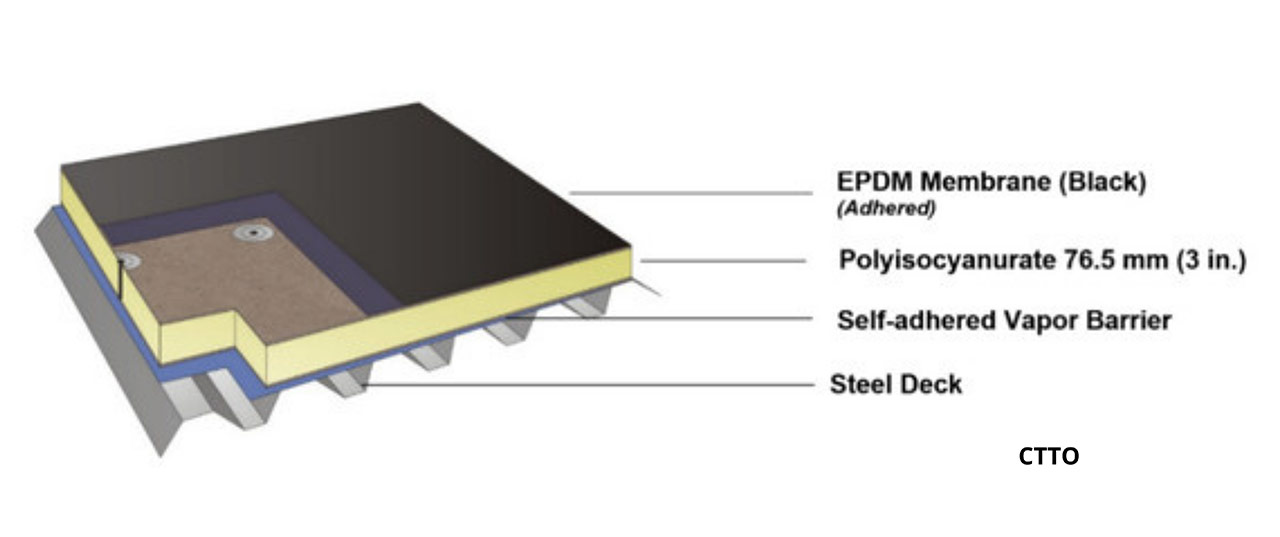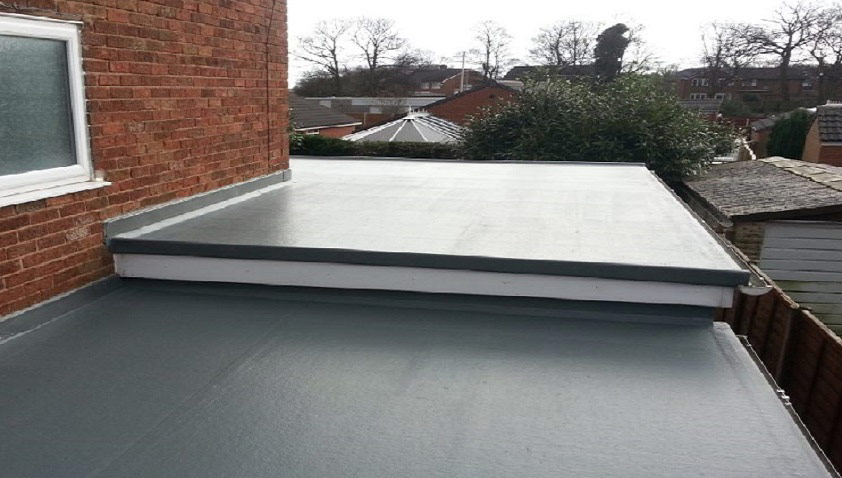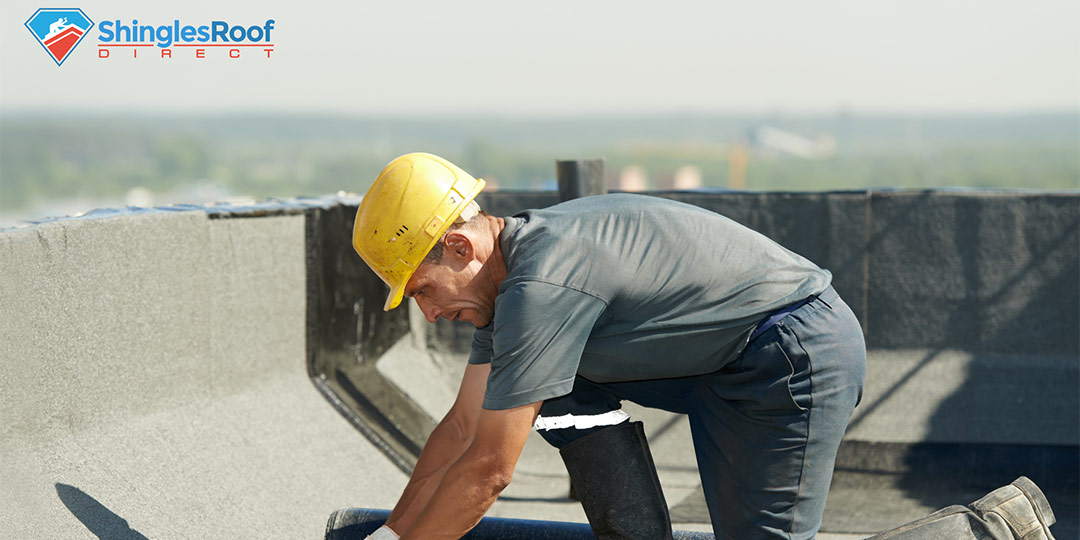
What is EPDM?
EPDM is a type of synthetic rubber that is noted for its long-lasting properties. If you’re wondering what EPDM stands for, it is Ethylene Propylene Diene Monomer, but the abbreviation is more commonly used. EPDM has been the industry standard for many years when it involves rubber roofing, and with proper EPDM roofing installation by a trained and experienced contractor, it’s shown to last for over 50 years.
EPDM roofing consists of a single-ply membrane installed over roofing installation or directly over plywood and roof decking. The material is lightweight and weatherproof. EPDM is one of the best choices for commercial roofing to prevent costly leaks and minimize the amount of maintenance needed to protect your building’s structure. It has many incredible benefits that it offers for flat and low sloped roofs.
EPDM is an alternative to a TPO roof. As for what TPO roofing is, it is another type of roofing system that creates a watertight seal. EPDM and TPO roofing installation each have distinct advantages, so it is important to consider your unique roofing needs when deciding between the two. While an EPDM roofing system is more costly, it will generally last twice as long, especially in hot weather.
How Can You Benefit from EPDM Roofing?

EPDM roofing is much superior to traditional flat roofing material, like felt. It is crack-resistant, won’t blister or rot, and it can withstand high winds without blowing off. It’s extremely water-resistant and repels mold and mildew growth, virtually eliminating the threat of leaks in a flat roof, as long as you are diligent with roof maintenance. EPDM roofing is safe to walk on for light maintenance, like cleaning your gutters.
Hail and falling debris tend to bounce right off of EPDM roofing, making it a perfect choice for areas with heavy storms. It also holds its shape and elasticity well in both hot or cold weather and is suitable for areas with frequent temperature shifts. EPDM also holds its shape if you have minor foundation issues. If your EPDM material is damaged, it can be spot patched and sealed readily, so you won’t need to replace your entire roof.
EPDM roofing also resists sun damage and fading very well. If you choose the standard black EPDM, it tends to absorb a lot more heat than newer alternatives (like TPO membrane) which can translate into lower heating costs in the winter. On the other hand, the white roofing membrane will reflect heat efficiently, which can lower the cost of your energy costs for cooling in the summer.
EPDM is crafted with environmentally friendly materials that take very little energy to create, and since it’s very stable, it won’t release any toxic elements into the environment during rainstorms. When it’s time to replace your roof, it’s easily recyclable, so it won’t need to end up in the landfill.
What to consider before choosing EPDM?
EPDM roofing comes in three standard thicknesses: 45 mil, 60 mil, and 90 mil. While the increased thickness can add more durability, it comes at a hefty price.
Ultimately, the differences in thickness won’t matter as much as the quality of the product and the roof’s underlying structure. Areas with heavy hail or snowfall and high foot traffic may benefit from the thicker material, and your roofing contractor can advise you on the best choice for your needs.
You can also choose between the standard black rubber membrane or the white-coated material. Typically, the black color is better suited to climates with more cold days, and the white one is better for warmer climates. However, the white EPDM coating can be more expensive, so in temperate climates, you may have to factor in how much you typically spend on cooling to determine if the extra cost is worth it.
EPDM can be fully installed with bonding adhesive or attached mechanically with fasteners, depending on your needs and budget. Adhered EPDM will last longer, but it is more difficult and costly to install. Either way, correct EPDM installation requires expertise and skill, and you should never attempt installation without a professional roofing contractor.
You can install EPDM rubber roofing over your existing metal roofing in many cases, which can save you money on labor and materials during your installation. Your local roof consultants can evaluate your existing roof’s condition and discuss your options so you can make the choice that’s best for your budget and building.

